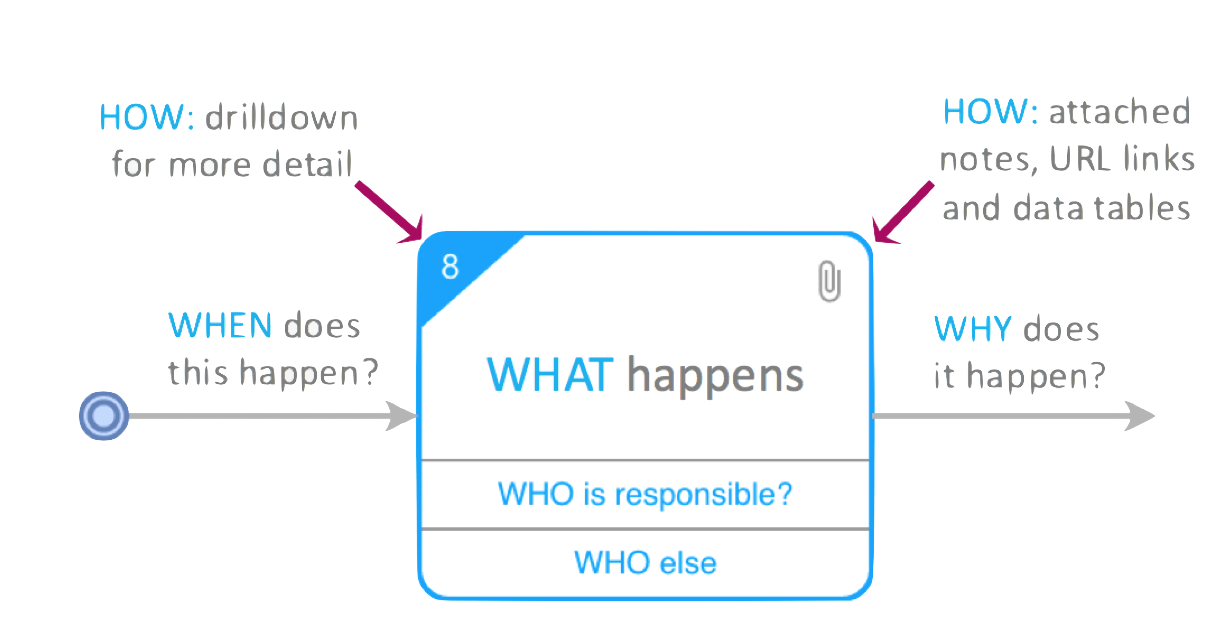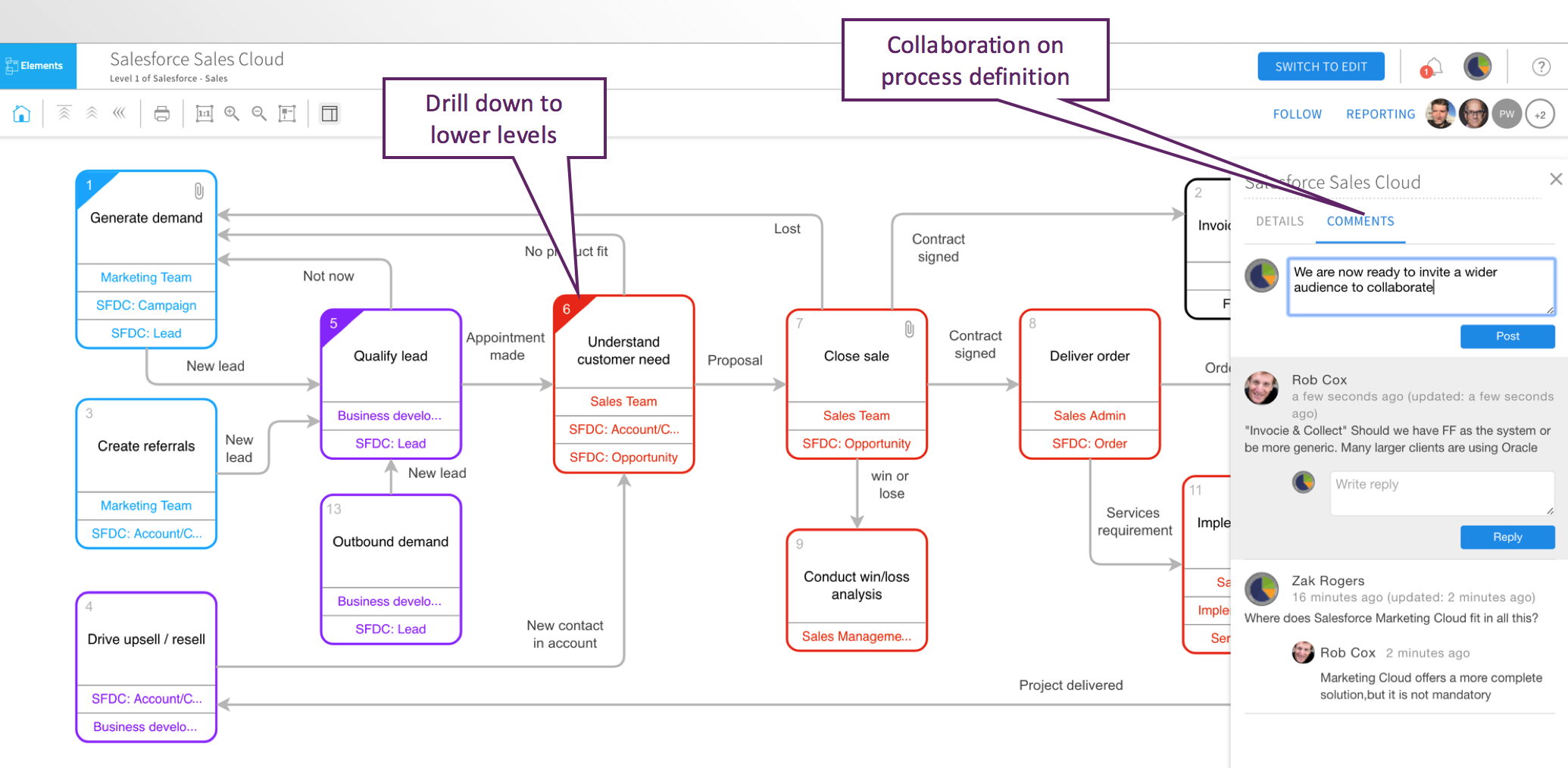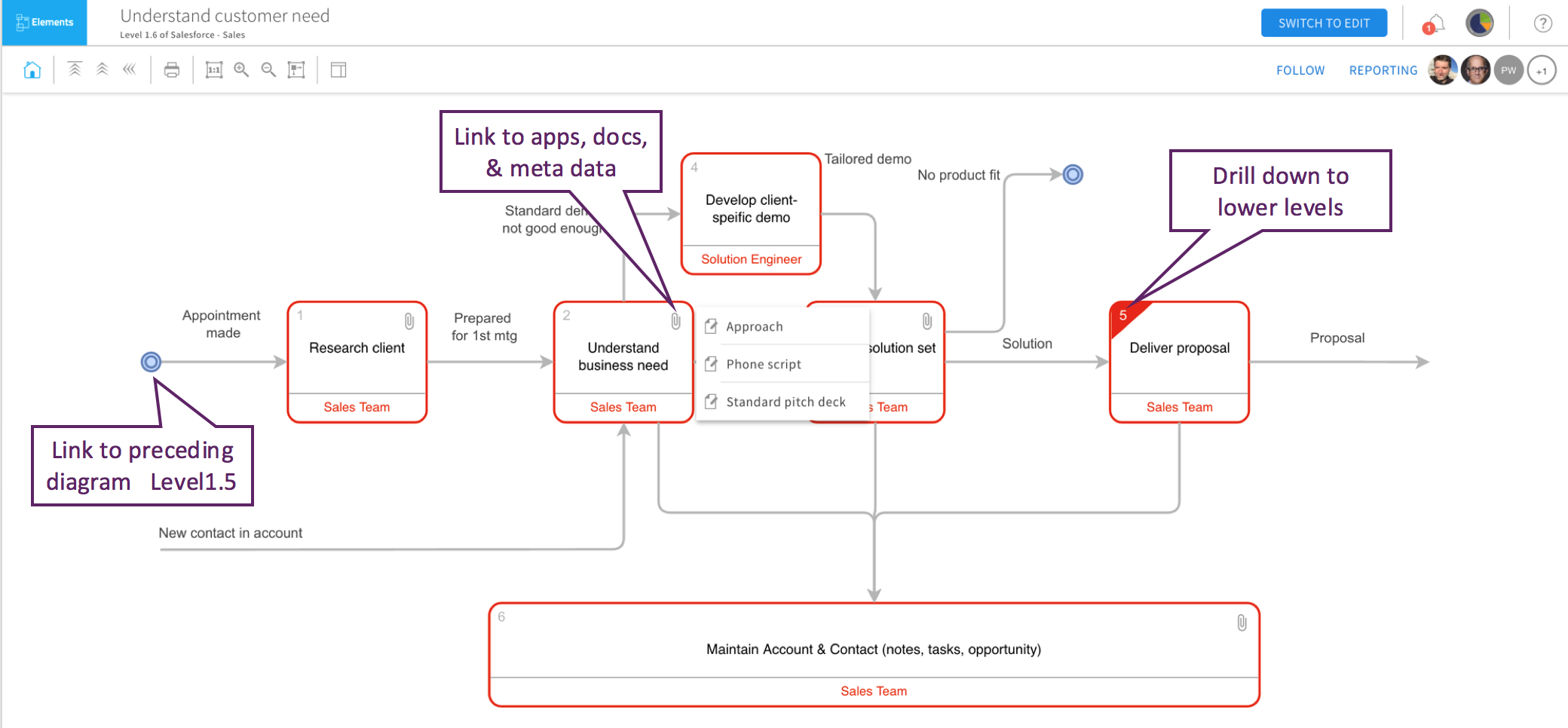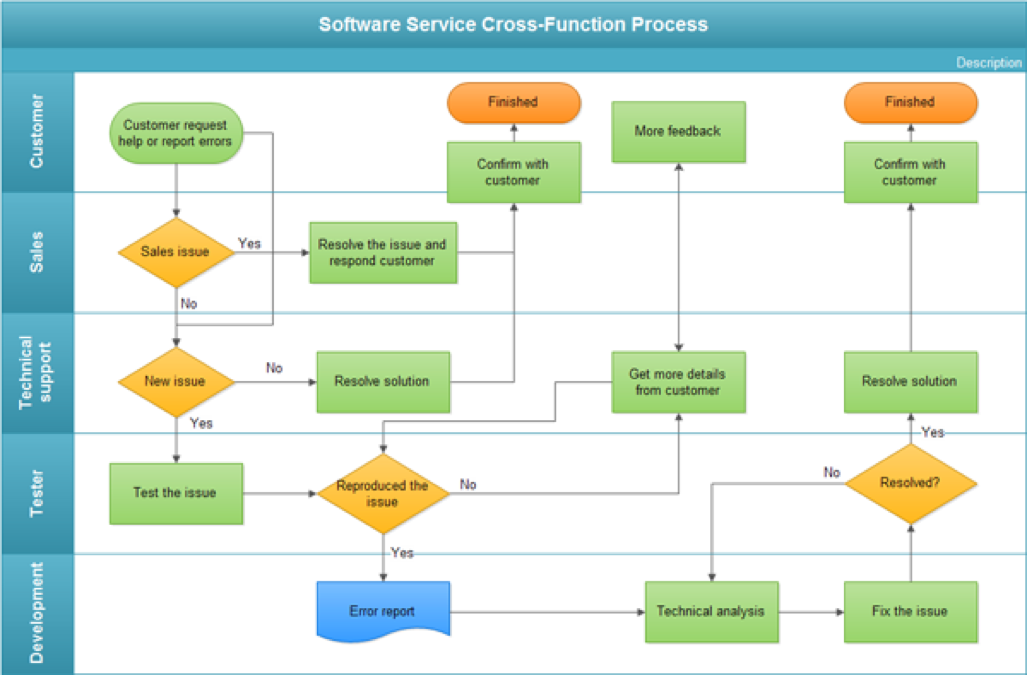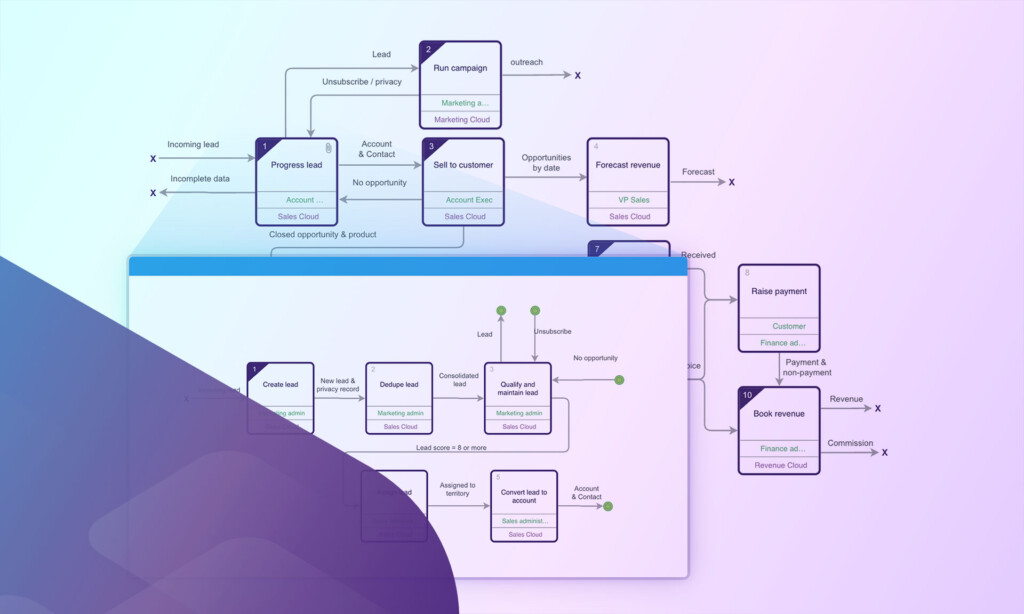
Universal Process Notation (UPN)
History of power of UPN
The principles behind UPN were first published in back in 2004 in a book called Common Approach UnCommon Results. Nimbus Partners released this as an open standard in 2008 called UPN (Universal Process Notation). TIBCO after their acquisition of Nimbus continued to promote UPN.
The power of UPN is its simplicity because:
- It is not proprietary to any tool. Elements, TIBCO Nimbus and many of the process mapping tools and even the diagramming tools like Powerpoint and Visio can be used to develop UPN diagrams. You can even use pen and paper. Clearly Elements has been designed to be the best (and cheapest) UPN drawing experience.
- Any end user, no matter what level of seniority, background or discipline can understand it. It is lingua-franca for process.
- Diagrams are tighter* so that they fit onto a single screen (laptop/tablet) which means they can be accessed at point of need.
*take any process drawn using flowcharting, swimlanes or BPMN notation and a UPN diagram will be smaller. Fact. Jim Boots in his book “Boots on the ground”, which chronicles his experiences of running the BPM program at Chevron, wrote a chapter with a worked example to demonstrate the point.
At the bottom of this article is a comparison of a flowchart/swimlane vs UPN diagram.
Diagramming principles
We need smaller / tighter and more easily understood diagrams that can be viewed online and embedded in webpages and apps so :
– No more than 8–10 activity boxes on a screen.
– Drill down from any activity box to a lower level to describe more detail
– Attach supporting info to activity box.
– Viewed with ability to collaborate with secure access rights.
– A mechanism for capturing improvement and suggested changes.
– Version control with a mechanism for capturing suggested improvements.
Here is a typical top level process diagram, and below it a lower level “drill down” using the UPN approach.
Comparison: Flowchart (old) — Process Map (new)
Typical flowchart with swimlanes and decision boxes.
Taking the information in this flowchart example and applying the simple UPN notation of “Who needs to do What, When, Why and How?” Note how much this simpler this is with a clear left to right flow, and more information and less ambiguity. You can even boxes or lines boxes different colors or add images!!
Some subtle but critical aspects of UPN
Activity boxes start with verbs;this makes the processes more accurate/specific. Avoid using ‘manage’
Activity boxes have a ‘resource’ rather than positioned on a swimlane; this enables the diagrams to be tighter with a more logical flow left to right and activity boxes can have multiple resources.
Lines with text exist between every activity box; these are the handoffs between processes and are absolutely fundamental as many process issues are misunderstanding on what the handoff criteria are e.g. what is the shared and agreed definition of “qualified lead” or “closed opportunity”.
Decisions are several lines coming out of an activity box with line text explaining flow; this reduces the number of activity boxes on a diagram without losing any of the information
Drill downs give more detail; this enables the diagrams to be kept to 8–10 boxes, but still describe a broad scope or complex processes. There is no limit to the number of levels you can go down (shown as corners).
Attachments show documents/metadata/metrics in context; this reduces the time to find the related documentation (shown as paperclips).
UPN Standard (as defined by TIBCO)
Sign up for
our newsletter
Subscribe to our newsletter to stay up-to-date with cutting-edge industry insights and timely product updates.

